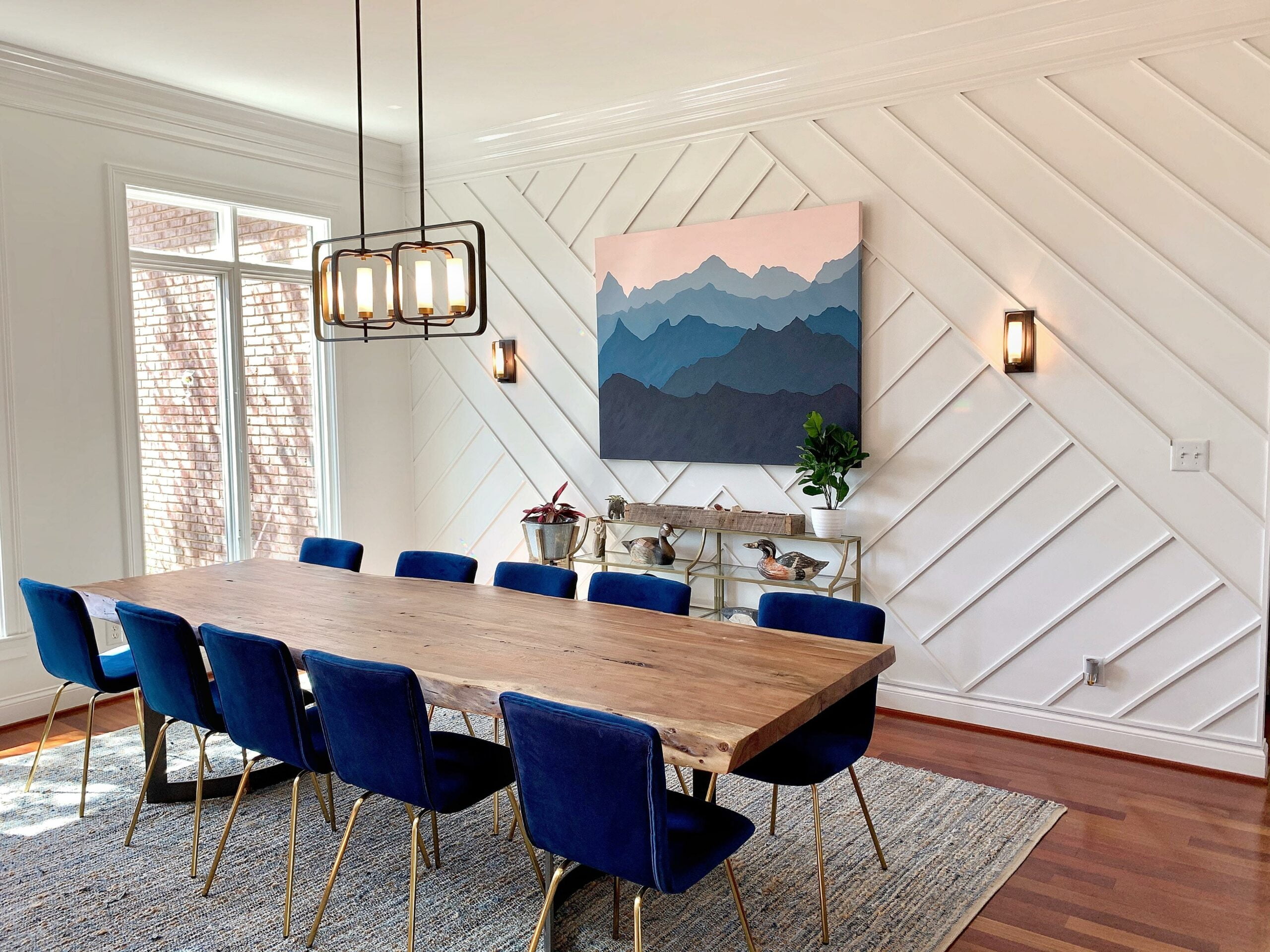Welcome to Table Trivia: Uncovering Surprising Facts about Furniture! In this captivating article, we will delve into the realm of table furniture and explore a treasure trove of interesting facts that will leave you in awe. From the rich history of various table designs to the hidden functionality behind their elegant forms, we will uncover the fascinating stories that lie beneath the surface. Whether you’re a seasoned home decor enthusiast or simply someone who appreciates the artistry of furniture, this article is bound to pique your curiosity and provide you with valuable insights to elevate your living spaces. So, without further ado, let’s embark on a journey to unravel the captivating world of table furniture and discover some truly remarkable surprises along the way!

Interesting Facts About Table Furniture
Are you ready to dive into the captivating world of table furniture? Get ready to uncover some surprising facts that will enhance your appreciation for these essential pieces in your home. From the origins of tables to the diverse materials and designs they encompass, the history and functionality of table furniture will leave you amazed.
Egyptians and Chinese: A Table for Every Purpose
Tables have been an integral part of human civilization for centuries. Did you know that Egyptians used tables not only for practical purposes but also for entertainment? They played board games on tables, indulging in friendly competition and social gatherings. On the other side of the world, the Chinese utilized tables as a platform for creating intricate artwork. Their tables were designed with meticulous craftsmanship, showcasing the fusion of aesthetics and functionality.
“These intriguing facts unveil the diverse roles tables have played throughout history. From hosting lively game nights to providing a canvas for artistic expression, tables have always been a versatile addition to our lives.”
Tables as Dining Spaces: The Greek Influence
When it comes to dining tables, we owe a debt of gratitude to the Greeks. They introduced the concept of using tables specifically for dining, transforming mealtimes into social affairs. The Greeks gathered around tables, sharing meals and engaging in lively conversations. This cultural evolution paved the way for the dining tables we know and love today.
“The Greeks’ visionary approach to dining tables redefined mealtime and transformed it into a communal experience. It reminds us that tables are not just functional pieces; they have the power to shape social interactions and create memorable moments.”
Materials, Shapes, and Heights: A World of Possibilities
Tables come in a dazzling array of materials, shapes, and heights, ensuring that there’s a perfect match for every interior style. Wood, metal, and glass are some popular choices, each offering its unique charm. Whether you prefer the warmth of wooden tables, the sleekness of metal, or the timeless elegance of glass, there’s a table out there that will effortlessly elevate your living space.
“With an endless variety of materials, shapes, and heights to choose from, tables provide endless possibilities for customization. They are like the starting point of a puzzle, where you can fit different pieces together to create a harmonious and stylish environment.”
Support and Versatility: The Anatomy of a Table
Tables typically consist of a flat surface supported by one or more legs, making them sturdy and reliable. The design elements of tables ensure that they can bear the weight of various objects, from dishes during meals to laptops during work sessions. This versatility allows tables to adapt to different needs, offering functionality wherever it’s required.
“The well-designed structure of tables offers the perfect balance between stability and adaptability. They effortlessly support our activities, enabling us to accomplish tasks with ease while also adding an element of beauty to our surroundings.”
Sofa Tables: Brightening Up the Space Behind Sofas
Ever wondered what those tall, narrow tables behind sofas are called? They’re called sofa tables, and they serve as a beautiful and functional extension of your seating area. Whether you choose to adorn them with lamps or decorative objects, these tables add a touch of elegance and sophistication to your living room.
“Sofa tables are like the unsung heroes of interior design, subtly enhancing the beauty of your living room while providing functional space. They’re versatile, allowing you to showcase your personal style and create a visually appealing ambiance.”
Work Tables: Celebrating Tradition and Creativity
Work tables hold a special place in history, particularly during the 18th and 19th centuries. These small tables were designed explicitly for sewing, reflecting the importance of craftsmanship and creativity in everyday life. Work tables allowed individuals to engage in their favorite hobbies and artistic pursuits, all while ensuring a dedicated space for their tools.
“Work tables are a testament to the enduring spirit of creativity and the pursuit of traditional crafts. They remind us that tables can not only serve practical purposes but also become a symbolic representation of our passions and talents.”
The Middle Ages: A Fusion of Functionality and Style
Tables during the Middle Ages were stunning pieces of furniture, blending both functionality and style. Often made of metal or wood, these tables stood on four feet, supported by x-shaped stretchers. Their design combined practicality with artistic flourishes, making them significant elements of medieval interiors.
“The tables of the Middle Ages exemplify the perfect marriage of functionality and style. Much like the era itself, they embody a fusion of practicality and artistic expression, showcasing the ingenuity and craftsmanship of those times.”
The Origin of the Word “Table”
Have you ever wondered where the word “table” comes from? It has its origins in the Latin word “tabula,” which means a board or flat top piece. This simple yet fascinating etymology sheds light on the fundamental essence of tables, emphasizing their flat surfaces as the central feature that sets them apart.
“Exploring the linguistic roots of the word ‘table’ connects us with its core identity: a flat surface that brings people together. It’s a beautiful reminder that tables have always been a gateway to shared experiences, where stories are shared, connections are made, and memories are created.”
Furniture: An Integral Part of Our Everyday Lives
Furniture, including tables, plays an integral role in our daily lives. It serves as the backdrop for our activities, providing comfort and functionality. From dining tables that bring families together to study tables that facilitate learning, furniture influences our experiences and enhances our well-being.
“Furniture is not just objects in a room; it’s an essential part of our lives, silently supporting us every step of the way. Tables, among other furniture pieces, are the building blocks of our living spaces, transforming houses into homes infused with love, warmth, and memories.”
Fun and Fascinating Facts: Opening Doors to a New Perspective
Delving into the world of furniture reveals endless delights, from design insights to cultural significance. Fun and fascinating facts about table furniture offer a fresh perspective, encouraging us to appreciate the craftsmanship, innovation, and beauty that enrich our surroundings.
“Uncovering the secrets and surprising facts about table furniture is like embarking on a captivating journey. It allows us to see beyond the surface, appreciating the intricate details and hidden narratives that lie within every piece, beckoning us to cherish and celebrate the artistry of table furniture.”
So, the next time you gather around a table, take a moment to reflect on its rich history and the invaluable role it plays in shaping our homes and our lives.
A dining table is not just a piece of furniture; it’s a gathering place where friends and family come together to enjoy delicious meals, share stories, and create lasting memories. If you’re curious about the fascinating world of table furniture, we have some captivating facts for you. Whether you’re interested in the history of tables or the various styles and designs available, we’ve got you covered. Click here to uncover interesting facts about table furniture: facts about table furniture. Get ready to be amazed by the rich and diverse world of tables!
FAQ
Q: What were tables used for in ancient civilizations?
A: In ancient civilizations, tables served various purposes. The Egyptians used tables for playing games, while the Chinese used them as surfaces for creating artwork.
Q: Who were the first to use tables for dining?
A: The Greeks were the first to use tables as dining places, recognizing the importance of gathering around a table for meals.
Q: What materials are tables made of?
A: Tables come in a variety of materials, including wood, metal, and glass. These different materials offer unique aesthetics and characteristics.
Q: How are sofa tables different from other tables?
A: Sofa tables are tall and narrow tables specifically designed to be placed behind sofas. They are used to hold lamps or decorative objects, adding style and functionality to living spaces.
Q: What were work tables used for in the past?
A: Work tables were small tables popular in the 18th and 19th centuries. They were designed for activities like sewing and provided a dedicated space for these tasks.
- Crypto Quotes’ Red Flags: Avoid Costly Mistakes - June 30, 2025
- Unlock Inspirational Crypto Quotes: Future Predictions - June 30, 2025
- Famous Bitcoin Quotes: A Deep Dive into Crypto’s History - June 30, 2025
















